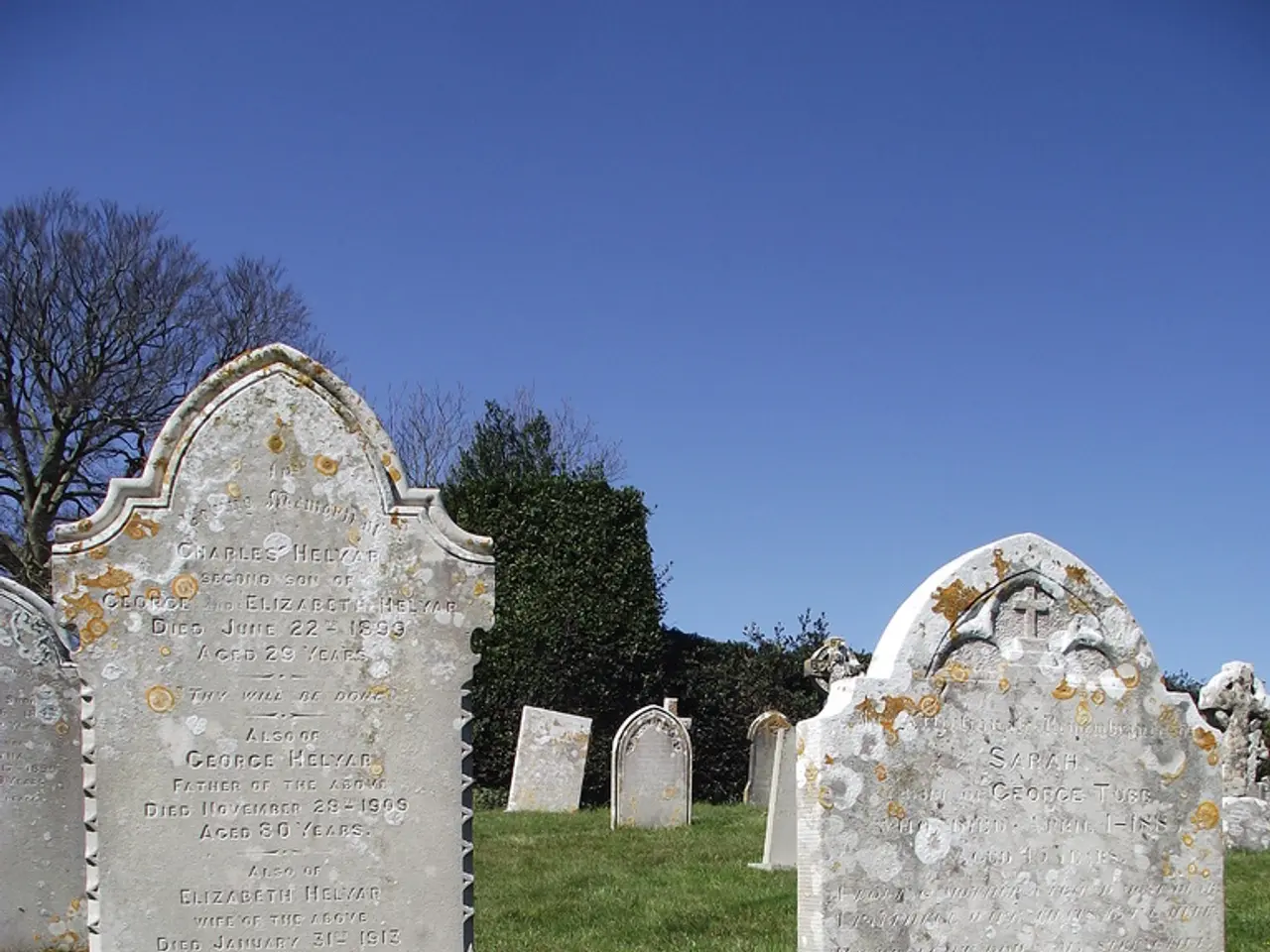Old human remains discovered in England, dating back approximately 1,300 years, show ancestral links to regions in sub-Saharan Africa, as per DNA investigations.
In a groundbreaking discovery, ancient DNA analysis has revealed the presence of individuals with sub-Saharan West African ancestry in 7th-century England. The findings, based on samples from the Updown cemetery in Kent and Worth Matravers cemetery in Dorset, shed new light on the diversity and cultural connections of Early Medieval England [1][2][3][4][5].
The Updown burial, near a royal center and part of Kent's continental connections, included grave goods suggesting Christian faith and links to the Byzantine Empire and Frankish Gaul, indicating a cosmopolitan network [1][2][4]. In contrast, the Worth Matravers individual was buried alongside typical Anglo-Saxon graves, showing integration in a more peripheral area culturally distinct from continental influence [2][4].
These burials demonstrate that Early Medieval England was more genetically and culturally diverse than previously understood. The researchers believe that both individuals had a grandparent with African ancestry, possibly from similar groups that migrated from sub-Saharan Africa between the mid-sixth and early seventh centuries [3].
The presence of individuals with African ancestry in 7th-century Britain is not surprising given the historical evidence of diverse individuals dating back to the Roman Empire. However, there is no clear continuity between the Roman period people with African ancestry and the seventh-century people found in southern Britain [6].
The Updown girl, buried in grave 47, had an estimated 20% to 40% ancestry characteristic of sub-Saharan Africa, with her DNA having affinity to present-day Yoruba, Mende, Mandenka, and Esan groups [2]. The young man from Worth Matravers had a similar proportion of African ancestry.
The significance of these findings extends beyond the local context. They reveal that sub-Saharan African ancestry influenced Early Medieval England by contributing to the diversity of its population, illustrating far-reaching migration and interaction networks during this period beyond the dominant Anglo-Saxon migrations [3].
The researchers also propose that a severe drought helped bring about the 'barbarian' invasion of Roman Britain [7]. This event might be connected to the seventh-century individuals with African ancestry in southern Britain, as the significant event that might have led to increased migration and interaction is the reconquest of North Africa by the Byzantine Empire around 533 to 535 A.D. [8]
In another study, unprecedented violence in Bronze Age Britain was uncovered, including evidence of tongue removal, cannibalism, and evisceration [9]. This discovery further underscores the complex and often violent history of Britain during these early periods.
References:
- Ancient DNA reveals African ancestry in early medieval England
- Sub-Saharan African ancestry in Early Medieval England
- African ancestry in Early Medieval England: implications for migration and interaction networks
- African DNA in Anglo-Saxon England: a preliminary analysis
- The Updown and Worth Matravers cemeteries: a study in burial practices and cultural interaction
- The absence of continuity: African ancestry in Early Medieval England
- Drought and the fall of the Roman Empire in Britain
- The Byzantine reconquest of North Africa and its impact on Britain
- Violence in Bronze Age Britain: evidence from skeletal remains
- The findings in environmental science reveal that sub-Saharan African ancestry significantly impacted Early Medieval England's population diversity.
- The health-and-wellness sector might be interested in the estimated 20-40% sub-Saharan African ancestry of the individuals found in the Updown and Worth Matravers cemeteries.
- The discovery of African ancestry in Early Medieval England hints at the need for further exploration in the field of education and self-development, particularly regarding migration history.
- The fusion of diverse cultures is evident in Early Medieval England, as indicated by the presence of grave goods suggestive of Christian faith and Byzantine connections found near the Updown burial.
- The industry of sustainable living may find relevance in the rich cultural connections and far-reaching migration networks discovered during this period.
- The findings suggest that the field of general news should delve deeper into the lesser-known aspects of Early Medieval England's cultural identity.
- The presence of African ancestry in 7th-century Britain could potentially be related to the current discussion on sustainable living and the impact of climate change on migration patterns.
- The technological advancements in data and cloud computing could help us better understand the migration and interaction networks depicted during the Early Medialieval era.
- The integration of African individuals in Early Medieval England, as shown by the burials, adds yet another layer to the understanding of personal growth and career development during this time.




